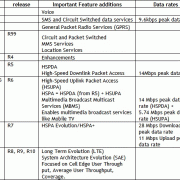Last Mile Mobile Solutions: An Efficient Aid Distribution Tool
- Photo Credit: Last Mile Mobile Solutions
Last month, food assistance from the United Nations World Food Program (WFP) reached more 26,500 people fleeing fighting in Sudan’s South Kordofan state. Not even close to a tenth of the 400,000 Southern Sudanese they fed before the latest outbreak of violence.
In humanitarian assistance missions, delivering aid to displaced people, at the right time, in sufficient quantities is extremely challenging, especially in inaccessible rural areas.
Lack of infrastructure prevents transportation, erupting violence hinders efforts, and overall allocation is inefficient and ineffective.
The Last Mile Mobile Solutions (LMMS) is a mobile technology aiming to change the aid distribution process.
LMMS bypasses the challenges that remote data collection typically faces in the last mile. With the swipe of a photo ID card, families receive the right amount of food, without waiting in line or conducting paper work
The beneficiaries of aid are directly registered in the field, and then immediately integrated into a humanitarian assistance project database, strengthening inventory control during aid distribution.
Ben Tshin of World Vision explains how the digitalization and automation of the aid distribution makes, “digital records of what we serve and how we serve them.” While the time to collect, stock, allocate, and report a humanitarian aid necessities is cut in half.
This is an illustration of how the LMMS system works:
Initially working with World Vision, a partner of the UN’s World Food Program, LMMS was piloted in Kenya and Lesotho in 2008 to assist with general food aid distributions.
Success of the pilot led to an extension of LMMS being used in all of World Vision’s feeding programs. In 2009, LMMS was adapted for feeding programs targeted for vulnerable populations to improve World Vision’s distribution and reach.
LMMS was designed for food allocation, but “is not specific to World Vision,” Tshin states, its framework is flexible enough to be used by other organizations working in humanitarian assistance.
LMMS streamlines the distribution process, but digitalization also makes the donor money more transparent—allowing donors to see who, what, and where their funds are going. Information on aid delivery activities is stored, aggregated and can be sent to donor organizations in a PDF format.
This new communication tool makes organizations on the ground more accountable to their donors, encouraging fair distribution and preventing redundancy between projects.
The LMMS also has a long-term goal in mind for how organizations can use this resource in its full capacity.
Potentially, the mobile technology could be a, “cloud online solution,” where donors in Washington will be able to view what is happening in humanitarian assistance missions abroad, in real time.
LMMS can conceivably be a central and secure point for data collection to improve efficiency in program planning and effectiveness, a very useful tool in the newly emerging, conflict prone regions of South Sudan.
This mobile technology can also help the current humanitarian assistance in South Sudan identify those in need of emergency food assistance and reduce food allocation time, which provides more people with food in less time—before more violence erupts.







































